BEETLE BATTLE FROM ABOVE
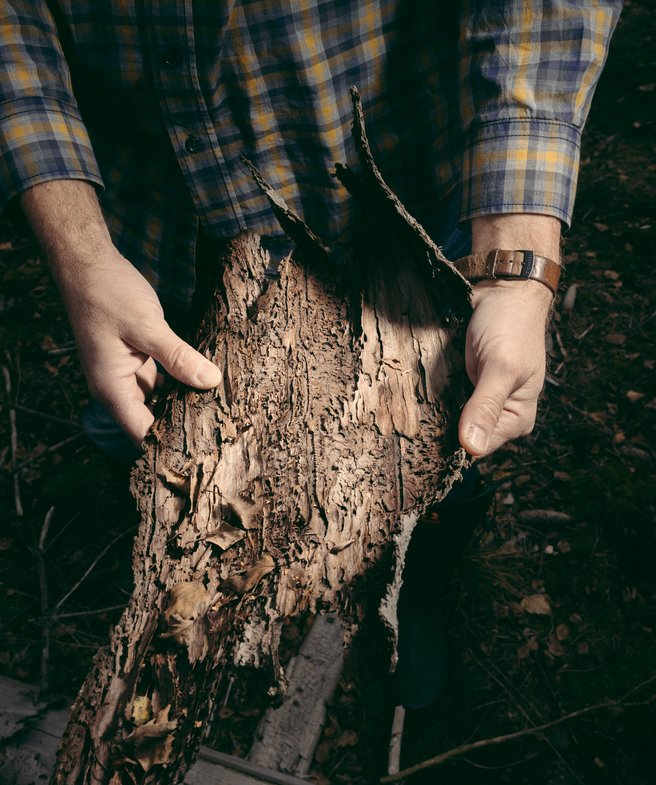
A few years ago, when Thomas Meyer heard that a landowner in his area wanted to sell a section of forest, he thought: How about it? For his whole life, the 48-year-old forester had been responsible for other people’s forests, some 3,000 hectares located around the city of Nauen in Brandenburg, Germany. So why shouldn’t he have his own forest for a change? He looked at the parcel: around 8,000 square meters—about one and a half football fields in size—full of birch and spruce trees, typical for the area. Meyer decided to buy it for the price of 5,500 euros.
Now, a few years later, Meyer is at his plot and looking at what’s left of it. It’s 40 meters wide and 200 meters long and half of the area is empty; almost all of the trees have been cut down. There are still a few young larches that Meyer recently planted, an oak tree that survived and a handful of old spruces, but the latter no longer have needles—in fact, they’re dead. “Of the 5,500 euros, maybe about 500 remain,” Meyer says, clearly disappointed.
Meyer’s plot fell victim to the bark beetle—not just one bug, of course, but thousands upon thousands of them. A single insect is just four to five millimeters in size and yet is one of the greatest threats to German forests. Every year, the number of trees felled due to bark beetle infestations reaches new records. Foresters have been forced to clear-cut entire forests. In North Rhine-Westphalia alone, the tiny insect has destroyed around 44 percent of the spruce stand since 2018.
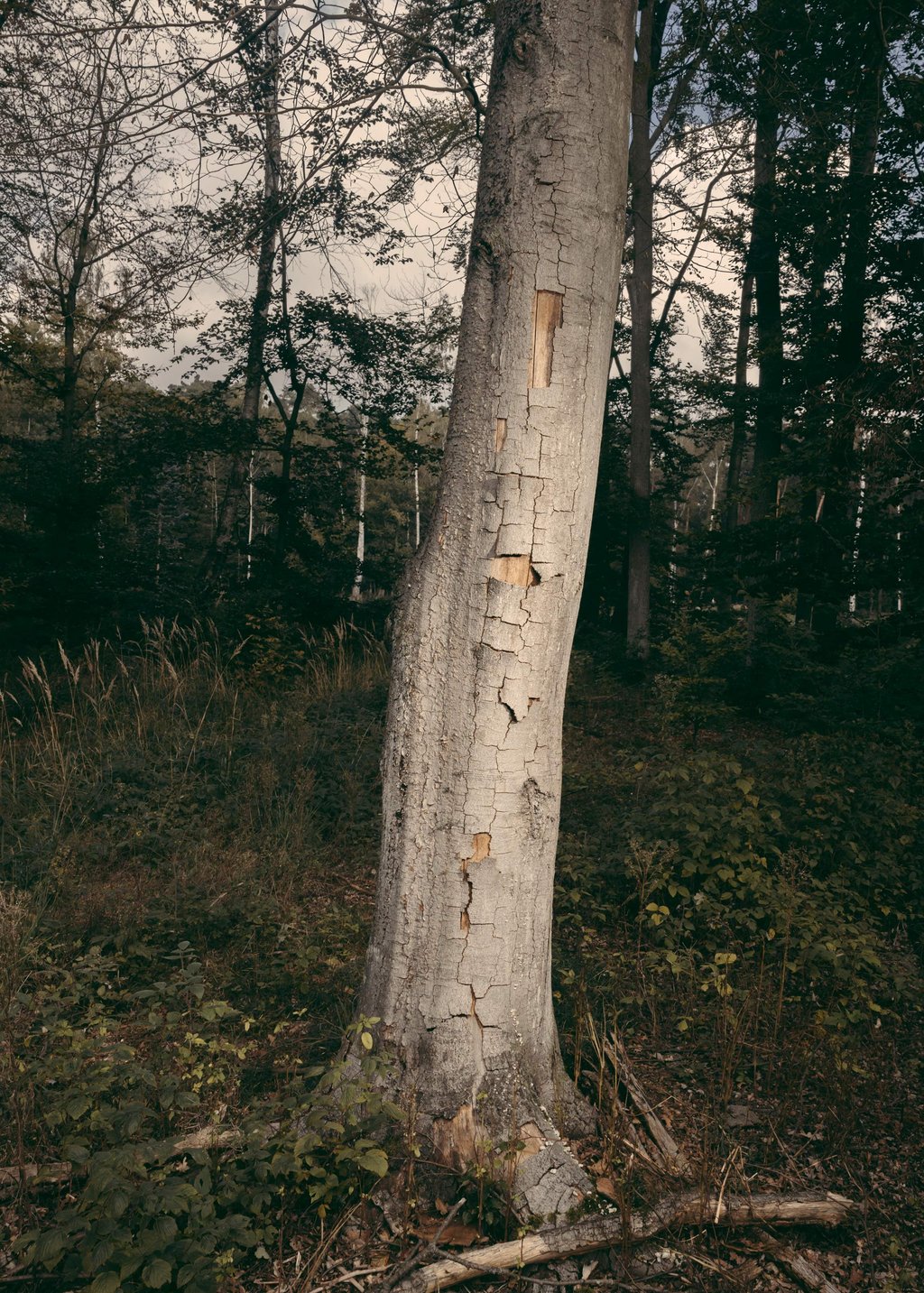
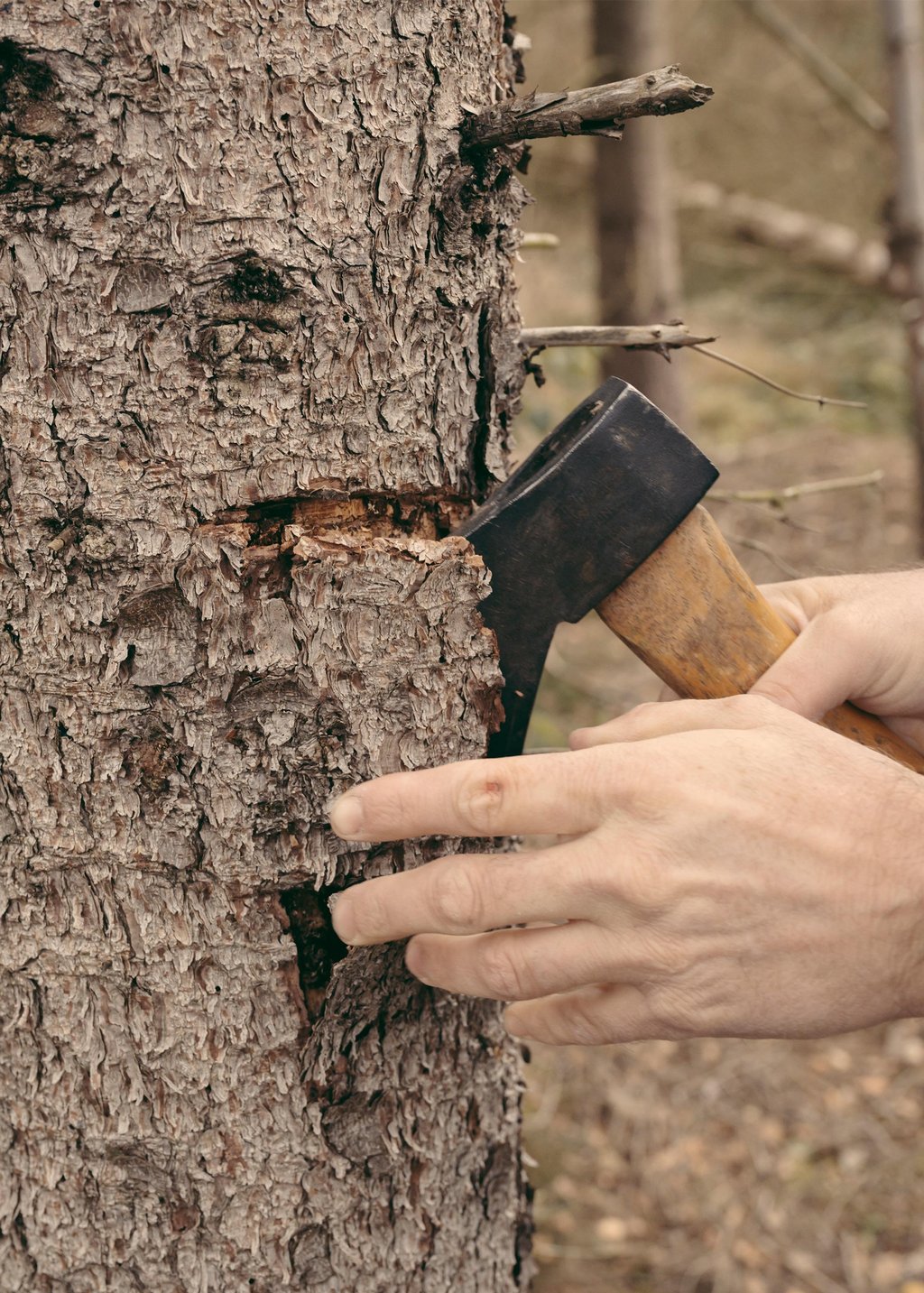
Of course, bark beetles are nothing new. They’ve always been around, but trees used to be better able to defend themselves against them. If a bark beetle tried to get under a tree’s bark, the tree started producing resin, which the beetle then got stuck in and died. Yet the warming weather has changed conditions in favor of the beetle. Trees need plenty of water to produce resin, and water is becoming increasingly scarce. And the bark beetle has been able to reproduce like never before.
Meyer is almost helpless against the bark beetle, and he’s not alone. There are around 2 million people who own private forest plots in Germany, totaling almost half of all German forests, around 5.5 million hectares—almost twice the size of the US state of Massachusetts. Almost all of these owners are desperately searching for a way to protect their forests against the tiny insect. Meanwhile, young entrepreneurs in Stuttgart, Germany, and Graz, Austria, are working on highly sophisticated technological solutions to contain the spread of the beetles. Using satellites, clever algorithms and infrared scanning, they hope to contain the pest. Will they be able to win this lopsided battle?
The end of Meyer’s plot was insidious. It started in autumn 2017 with a big storm and winds that devastated the forests in the area. On Meyer’s plot alone—just under a hectare—the storm felled 20 to 30 trees; around 1,000 succumbed in the entire forest. Fallen timber is even more attractive to bark beetles. The fallen trees should have been taken out of the forest quickly, but it took Meyer a year until he finally got the equipment he needed: what are known as harvesters, special wood harvesting machines that grab trees, fell them and sometimes even process them into wood chips. For trees that are dangerously close to streets or buildings, then Meyer needed cable skidders. None of that was available, at least not quickly enough.
Then came a drought in 2018: perfect weather for reproduction among the beetles. In 2019, his trees weren’t looking so good any more. Meyer immediately recognized the presence of bark beetles from the sawdust on the ground around the trees. The trunks were peppered with tiny holes. The bark was already falling off some trees, but they hadn’t yet died. Meyer knew time was of the essence.
“Time is everything,” Meyer says. “As soon as you think there might be something, you take a piece of bark and look to see how far along it is,” he explains. He walks over to one of the dead spruces on his plot and breaks off a piece of bark to illustrate what he means. “There’s even still one in its full glory.” And, in fact, Meyer pulls out a tiny black beetle from a tunnel and holds it between his fingers.
The bark also reveals how the beetle proceeds. First the beetle bores its way beneath the bark and digs out a large tunnel where it lays its eggs. As soon as the larvae have hatched, they too dig tunnels that are smaller and daintier than those of the mother beetle.
A bark beetle larva needs six to eight weeks to develop, then the young beetle flies away and bores its way into the next tree. The previous tree is left behind, dead, because its bark functions much like a circulatory system, transporting the water supply for the entire tree. The tunnels bored by the beetles interrupt these connections and the tree dies of thirst, so to speak.
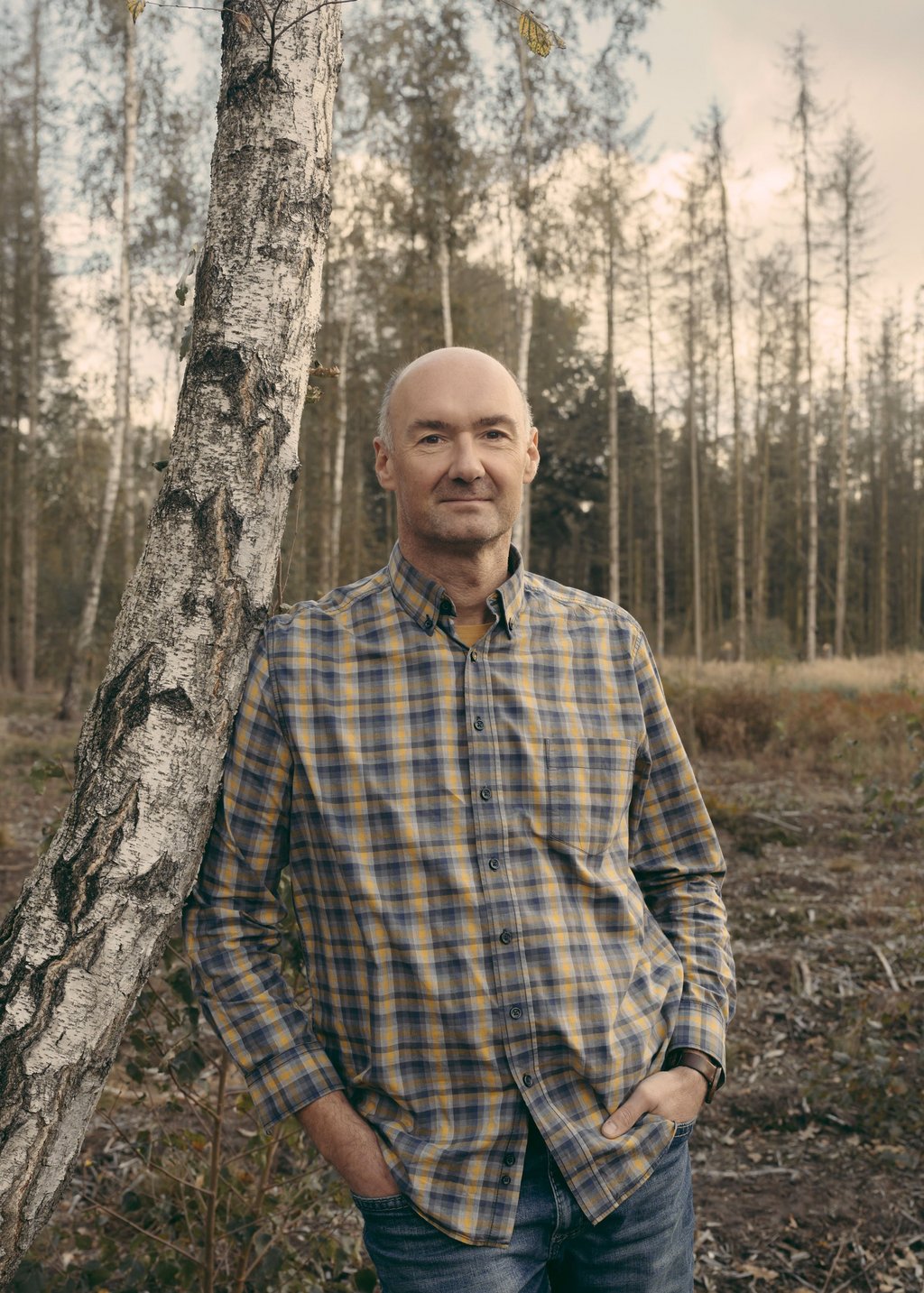

“To prevent the infestation from spreading, the trees must be felled together with the beetles beneath the bark and removed from the forest as quickly as possible and taken to the sawmill,” Meyer says. But to do this, the equipment must be available to chop down the trees and take them away, for example the harvester or the cable skidder. Since forests throughout Germany are suffering from bark beetle infestations, foresters and equipment are in high demand, but scarce.
Aside from which, the sawmills are hopelessly overfilled. “They’ve been drowning in wood in recent years,” Meyer says. Meyer had to store some of the wood in the forest until the sawmills could take it. While it lay there, the beetles were able to spread further. At some point, Meyer just gave up and left the dead spruce where it stood. He knew he had lost the battle.
“My job hasn’t been fun the past few years,” he says dejectedly. Nauen’s forester has been observing the area’s forests for years. It all used to be green, but now the forest would look like a patchwork of color from above. What percent of the spruce trees have been lost in total? “In all of Nauen?” Meyer asks in reply. “In Nauen, all the spruce trees are dead.”
In Stuttgart, 600 kilometers southwest of Nauen, sits the young engineer Tobias Jäger. The 33-year-old with brown hair is in a small, somewhat sparsely furnished office, and is talking about how it happened that his startup, Waldstolz—Forest Pride—is trying to help private forest owners in their fight against the bark beetle, even though he’s had almost nothing to do with trees his entire life. At least not professionally, until now.
After studying mechanical engineering in Karlsruhe, Germany, Jäger quickly made a career in business. He had been working for three years when he noticed that he was slowly becoming dissatisfied. He increasingly found himself asking what the point of his work really was. So Jäger confided this to his friend Fabian Popp. Popp is a creative entrepreneur who founded his first startup while attending university and launched a card game, Pub Quartets, with coupons for local bars in Karlsruhe. At the time, Popp was working for a chainsaw company and was craving something more.
The two told themselves that they were too young for such monotony and decided to leave behind the security of their regular jobs to start something together. Without knowing exactly what they wanted to do, they submitted their resignations and started brainstorming. They spent a year juggling ideas.
“We quickly arrived at the forest,” Jäger recalls. Also because Popp had spoken with a lot of foresters at the chainsaw manufacturer and had learned a lot about their struggles against the bark beetle. “In the forest, we’re experiencing a changing climate right on our own doorstep. That’s what we wanted to build on.” The topic of forest protection also seemed to have potential from an economic standpoint as well. After all, half of the forests in Germany are privately owned.
So the two of them sought out foresters and forest owners and asked: What is the biggest problem in the fight against the bark beetles? “The answer was always: time,” Jäger says. “As a private owner of forest plots, as soon as the weather gets warm, you have to check each tree every two weeks and see if the beetle has flown in. That’s not feasible for many owners. So we asked ourselves: How can we solve this problem?” The solution they came up with: remote monitoring.
Four weeks after a beetle has landed on a tree, its needles begin to slowly turn brown. The tree isn’t dead yet, nor has the beetle moved on. There are now two to four weeks’ time to fell the tree and get it out of the forest. If the color of the trees could be monitored from above, it would be possible to recognize the presence of the bark beetle without needing constant monitoring of the site from the ground. But how?
Drones are far superior to satellite technology as far as image quality is concerned. “But drones are logistically costly. You have to physically go there, and then you’re not allowed to fly the drone during certain bird breeding seasons and so on,” Jäger says. “Satellite images are more independent. They’re up in the air no matter what. And take new pictures every five days.”
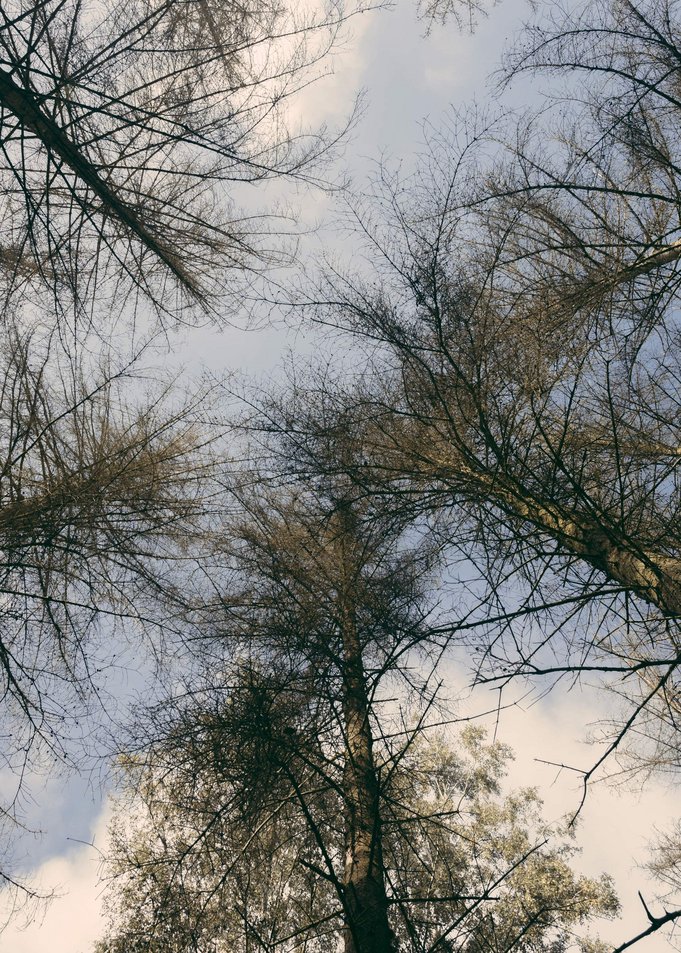
“Of course the bark beetle isn’t always present when there’s a warning. But in the past few weeks, we’ve had a hit rate of 70 to 80 percent.”
In 2020, Jäger and Popp came across the Austrian company Joanneum, which was pursuing the same idea as part of a research project and had developed a program that detects color changes in the Austrian forest on satellite images. They formed a cooperation. “It was ideal for us because we didn’t have to reinvent the wheel, just adapt the technology to the different configuration of the forests in Germany,” Jäger explains.
Jäger opens some current satellite images from the European Space Agency on his computer. The satellite that sends new images to the startup Waldstolz every five days is called Sentinel-2 and belongs to the European Union’s Copernicus Program. “Sentinel-2 has a comparatively good camera and also displays a lot of data in the non-visible range, for instance in the near-infrared range,” Jäger explains. “And especially in this near-infrared range is where there’s a lot of information about a tree’s health and vitality.”
The human eye alone can only recognize a tree’s leaf color. Sentinel-2, on the other hand, scans with infrared beams, which hit needles and leaves and then are reflected back to the satellite. The strength of the reflection is a measure of how healthy the tree is. If it’s very unhealthy, it reflects hardly anything back at all. Jäger and Popp make use of this data.
Each image from Sentinel-2 shows a square with an area of 100 square kilometers. Jäger opens one showing the Allgäu region in southern Germany and enlarges it. If you think you’re going to see individual trees, you’re sadly mistaken. What you actually see is mostly just individual green pixels. Each pixel represents an area of ten-by-ten meters. The pixels on satellite images from Google Maps show 30 by 30 centimeters, but such detailed images are only taken every few years and don’t have any data from the near-infrared range.
Each new satellite image must first be processed. This means, for instance, that clouds and shadows cast by the sun must be calculated out. The program developed by Joanneum uses an algorithm to calculate how the forest should be developing at this or that location. To do this, the algorithm uses satellite images from the past four years and the vitality data available from them. “It’s a very complex model, because the vitality can only be determined in relation to the previous data,” Jäger says. Explaining what he means, he continues: “Every small area of forest behaves differently and thus has different health and vitality values depending on how it is planted or what season it is.” For instance, a section of the forest with deciduous trees can be expected to have a radical drop in values in autumn when the trees suddenly lose their leaves. That’s no reason to panic. If, on the other hand, a coniferous tree suddenly has low vitality values in autumn, that’s much more worrisome.
The algorithm then compares the data from the new satellite image with the data that the model had previously predicted for the forest. If the data deviates too far from the predicted value, the algorithm flags the image at that spot. However, a single tree with changed values isn’t sufficient on its own; the algorithm requires a small group of at least two or three trees with lower vitality data to be able to recognize the changes and sound the alarm. Forest owners are then automatically warned via text message and email. Armed with a map and GPS data, they can then check to see if the bark beetle has arrived and no longer have to examine every single tree.
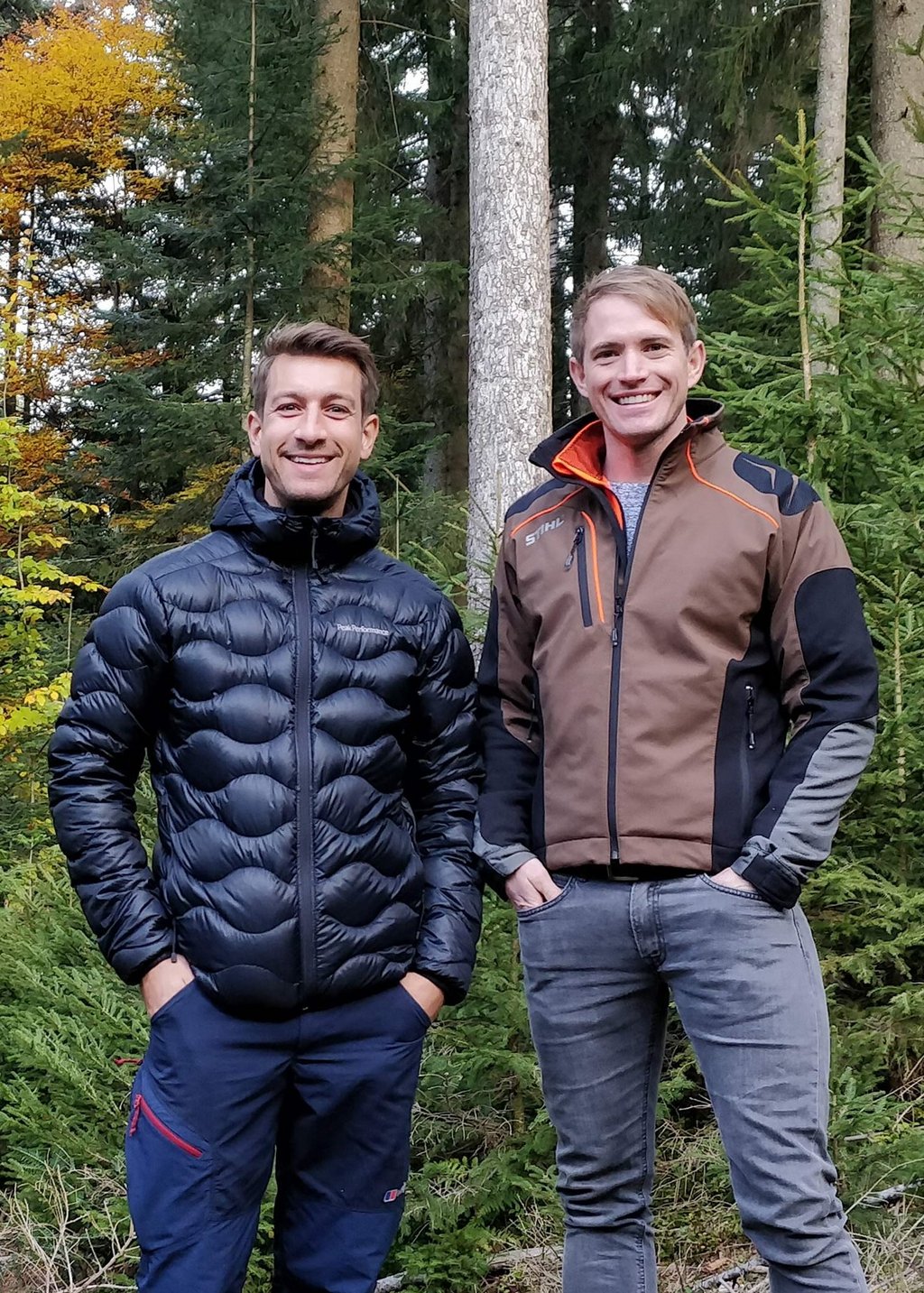
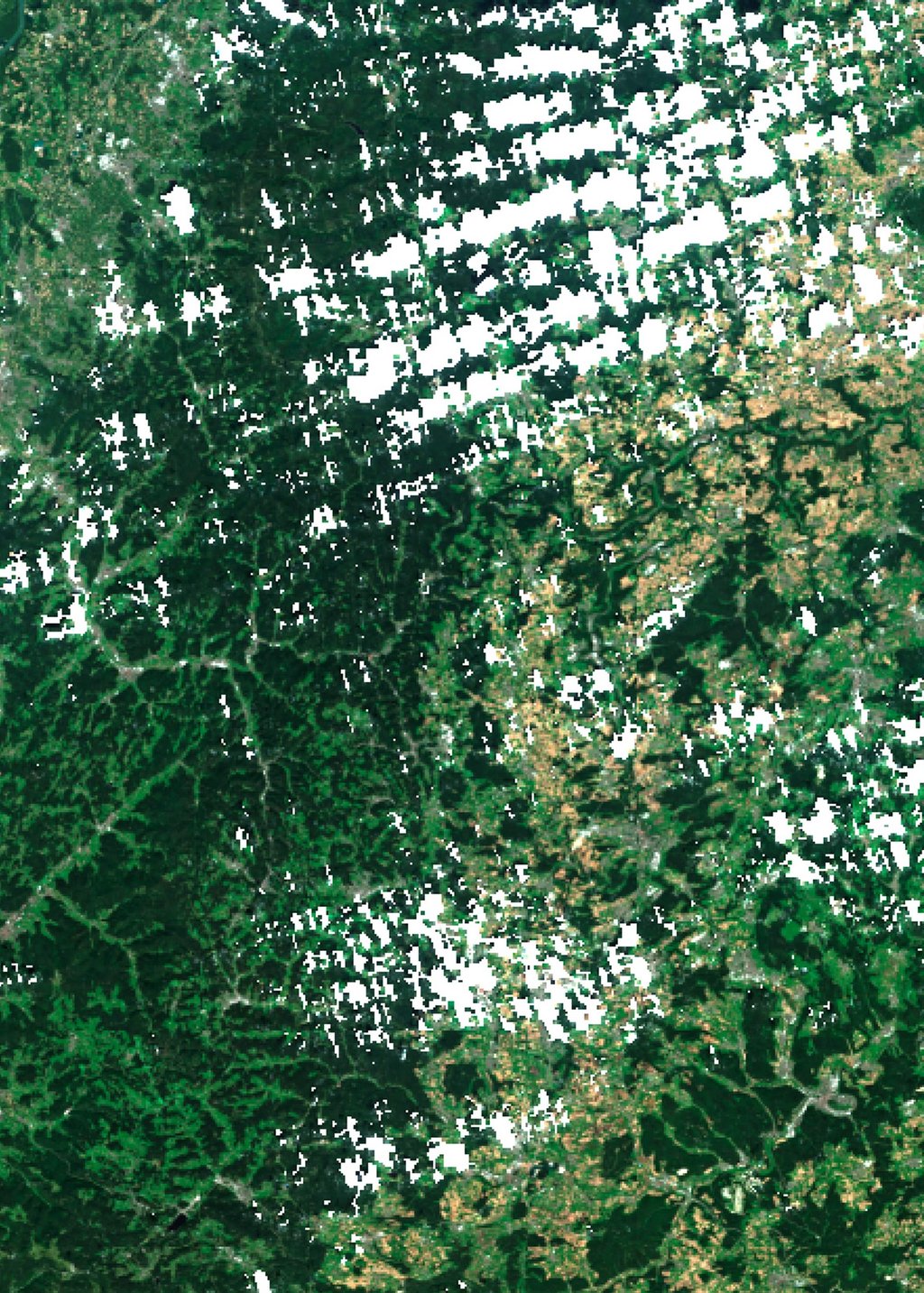
In the forest in Nauen, forester Thomas Meyer is skeptical when he hears about the monitoring service by Waldstolz. He believes that if you own a forest, you also need to be present. He also worries about false alarms. “Just because the crown discolors, it doesn’t mean that the bark beetle has actually infested the trees,” Meyer says. “Maybe it’s discolored because the trees are suffering due to drought conditions.”
In Stuttgart, they disagree. “Of course the bark beetle isn’t always present when there’s a warning,” Jäger says. “But in the past few weeks, we’ve had a hit rate of 70 to 80 percent.” At the moment, Waldstolz only offers its monitoring service in the Black Forest and in the Allgäu. A total of fifty clients are using the service in its pilot project phase, most of whom are private owners. Next year, Jäger and Popp plan to expand their services and monitor other areas in Germany.
It’s already too late for Meyer. He isn’t planning to plant any new spruce trees on his plot and instead will focus on larch and maple. The bark beetle isn’t so keen on those species.
Meyer carefully examines a small maple sapling that is showing its first leaves, close to a path through the forest. It’s already over a meter tall. “One more year and it will be so big that the deer won’t be able to eat it,” Meyer says, full of hope. That is an enemy he can handle on his own.